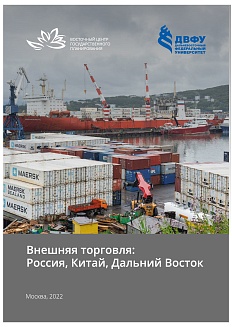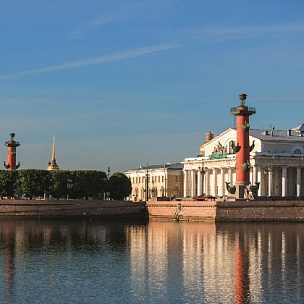The influx of tourists into Vladivostok is reaching record levels for Russia. There are two main reasons for this: the fact that not everyone needs a visa to travel there, as well as the fact that Vladivostok is the closest European city for many of Russias neighbours. Its young (next year will mark its 160th anniversary), eclectic (with a mix of all styles and types of architecture), hospitable and wide open to the world.
The forts of Vladivostok Fortress are the citys secure defences on land and sea
An integrated resort and entertainment area that has been under construction for several years finally has been completed. The city boasts the already thriving casino Tigre de Cristal (and a few more similar establishments are on their way) and the conveniently located Primorsky Aquarium, which has a wonderful collection. Whats more, there is the countrys only marine reserve, old streets and viewing platforms which have been successfully assimilated into the tricky terrain, and finally the low prices to the favourable exchange rates. All of these elements draw tourists to the city, which just over a quarter of a century ago had the status of a closed city-fortress and was the countrys military fortress in the Far East. Still, Vladivostok has one other huge advantage, which is entirely unique and cannot be found anywhere else in the world: Vladivostok Fortress. There arent many similar structures in the world, and none of them are identical to one another. The chance to visit each of them is a real treat for history buffs and admirers of fortress mastery.

The construction of the fortress began on the very first day when Russian soldiers set foot on the deserted shores of the Golden Horn Bay from the Manchur military ship on 2 July 1860; the first guns were unloaded and the construction of the first flèches and lunettes began. Building officially was underway since 1889, but the bulk of the work took place between the Russo-Japanese War and World War I. The fall of Port Arthur identified key requirements for a fortress that was meant to be impregnable.
And so it was built, using new or as we would say nowadays innovative and cutting-edge technology. As construction was taking place in a mountainous and particularly inaccessible location, the first steps in building the fortress involved the wide use of cable cars, along with compressors, concrete mixers, and local power plants.
It would be wrong to say that the fortress turned out the way that its builders and designers intended. The rate of construction slowed down when World War I broke out in 1914, as weapons and construction materials were sent to the West. Still, the fortress was completed after all. By that time, it had around 50 coastal batteries, capable of taking on the most powerful of enemy ships, 16 forts, tens of coastal air shelters and half canopies, along with many strongholds and land batteries. All the main buildings were supplied with electricity and interconnected with roads and cable cars. Minefields could be rapidly deployed with the fleets help when needed. Tunnel and casemated barracks, along with kilometres of sub-galleries and tunnels, were erected on the main forts to protect against artillery fire. Today, you can stumble across fortifications almost anywhere in Vladivostok, surrounding countryside or on Russky Island, and the roads and radial highways connecting the main fortress objects have been transformed into city streets and avenues.

You can come across a fortified structure anywhere in Vladivostok
The forts are also worth mentioning. Most of them are located on the Muravyov-Amursky Peninsula, spanning the Ussuriysky and Amursky bays and protecting Vladivostok from onshore. A few of them are on Russky Island, warding off any possible attack from the sea. But whereas the batteries blocking the troops are scattered across the headlands, the forts are located high up on the hills. Their multi-storey (mostly underground) powerful structures are immaculately inscribed in the complex terrain, which was exploited by Russian fortification engineers to enhance its defensive potential. Nowadays, it is mainly of tourist value, as the dizzying heights of each of the 16 forts serve as a particularly unique platform which looks out over Vladivostok, Russky Island, and the complex winding geometry of the islands, bays and straits of Peter the Great Gulf.
But back when the fortress was built, tourism was the last priority. Following defeats in the Russo-Japanese war and the fall of Port Arthur, Vladivostok acquired strategic importance for the State as a city port, which would become the beginning of the Trans-Siberian Railway route as the countrys main gateway to the East. That is why the words uttered by one of the main creators of the fortress, Major General Alexei Shoshin became what we would call today a slogan. Russian military engineers, builders, sappers, gunners, soldiers who built grandiose fortifications in difficult conditions, adhered to that: «The motto Russians are here to stay is the main inspiration to fortify the fortress». For that reason, Shoshin attached great important to the appearance of the main fortification structures. His order, issued in May 1913 at the height of the construction phrase, is well known:
«1. Our priority during construction, with the exception strength and stability, must be perfectly executing the external appearance of the structures.
«2. A lack of thorough work in this regard, that is the rough and ugly appearance of a building, is down to the builders lack of attention and love for his work, and the outsider is given the impression of negligence. Every last detail should be done neatly, correctly and cleanly. All construction lines, corners, edges, intersection lines of arches, planes, surfaces, etc., must be perfectly geometrically correct. Make sure the plumb lines are truly plumb, and the horizontal lines are truly horizontal. »
At the end of the Civil War, the fortress was disarmed, but it was restored in the 1930s when the new structures started to appear. The most famous of those was the Voroshilov Battery on Russky Island. The immaculately built forts and batteries served well for many a decade. A surprising and rare part of Vladivostok Fortress history is that over its century in existence, it never actually fired a single shot. But its very existence was of great value: the fortress became one of the main reasons that the Japanese government decided not to attack the country on behalf of Nazi Germany.

Despite its formidable cannons, the fortress has never fired a single shot

Today, the fortifications are the citys chief landmarks
After many years of faithful and solid service to its country, Vladivostok Fortress is now gradually being transformed into the citys key tourist attraction by the sea. One of the most accessible points that of the Voroshilov Battery is preserved almost intact. Today, there is not only a branch of the Museum of the Pacific Fleet, but also the military-patriotic park (Patriot), which is very popular among Vladivostok residents and visitors. For those who want to research the fortification structures independently, an interactive and detailed map of Vladivostok Fortress is a must. It can be found on the following website: www.fortvl.ru. Even better, you could get in touch with experts at the Vladivostok digger club (www.vladdig.org), who offer a choice of excursions for even the most demanding of tastes: from a whistle stop tour, designed for two to three hours, to tours lasting many days, which include a detailed survey of most facilities, as well as a trip down into the numerous and sometimes very deep underground structures.


Viktor SHALAI,
DIRECTOR OF THE ARSE E MUSEUM OF PRIMORSKY REGION AND DIRECTOR OF VLADIVOSTOK FORTRESS OPEN-AIR MUSEUM
As you are aware, President Vladimir Putin opened the Vladivostok Fortress open-air museum last year. But creating and implementing such a complex federal- level project out in the sticks (let us be honest here), let alone in a city with administrative-centre status, throws up a lot of unknowns. You undoubtedly need a breakthrough, and as far as I know weve arranged just that. The transition of the museum from a regional to a federal institution, i.e. granting it federal status and positioning it as a Museum of History of the Far East, will be the most effective solution in my opinion. Fortunately, this exact decision is currently being discussed at a ministerial level. One of the major, if not key, parts of this museum that will fit perfectly is the Vladivostok Fortress open-air museum. Nonetheless, it should be noted that having unique fortified constructions (forts, batteries, etc.) does not necessarily mean that you can immediately exploit their tourist potential. Many of the facilities have different legal statuses, so we cant just make them equal all of a sudden. It will require painstaking work by lawyers, cadastral experts and other specialists in the field of land, economic and legal relations. All the more so because in its time, certain mistakes were definitely made. In particular, a few years ago, a solid amount of the fortress facilities were transferred to state ownership and introduced into the Vladivostok municipality. Nowadays, though, the city would gladly give it all back, but its not that straightforward. In any case, we really hope that by next year well be able to show the fruits of our labour. I wont pinpoint any names because I dont want to jinx it, but Im sure that one of the forts will become a fully-fledged structure acquired by the museum. The transition to a federal level will bolster the museum and increase
its chances of implementing a whole range of unique projects. Aside from the Vladivostok Fortress open-air museum, it could include structured branches like the Eastern Museum of Russian Literature, the Maritime Museum and the Ethnological-Archaeological Village Park. And ultimately, our dream come true is the Museum of Civil War, which somehow ended up in Vladivostok.






